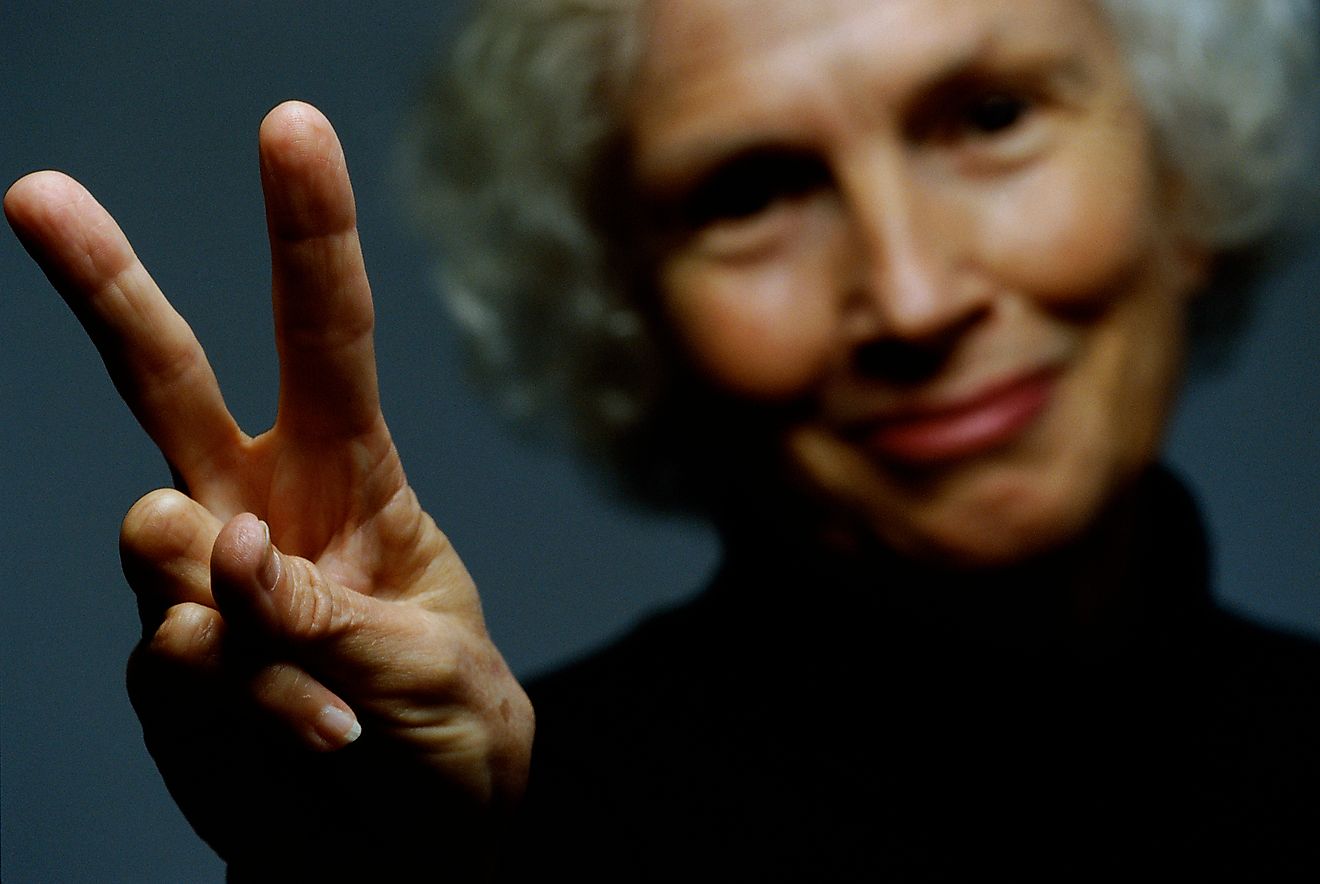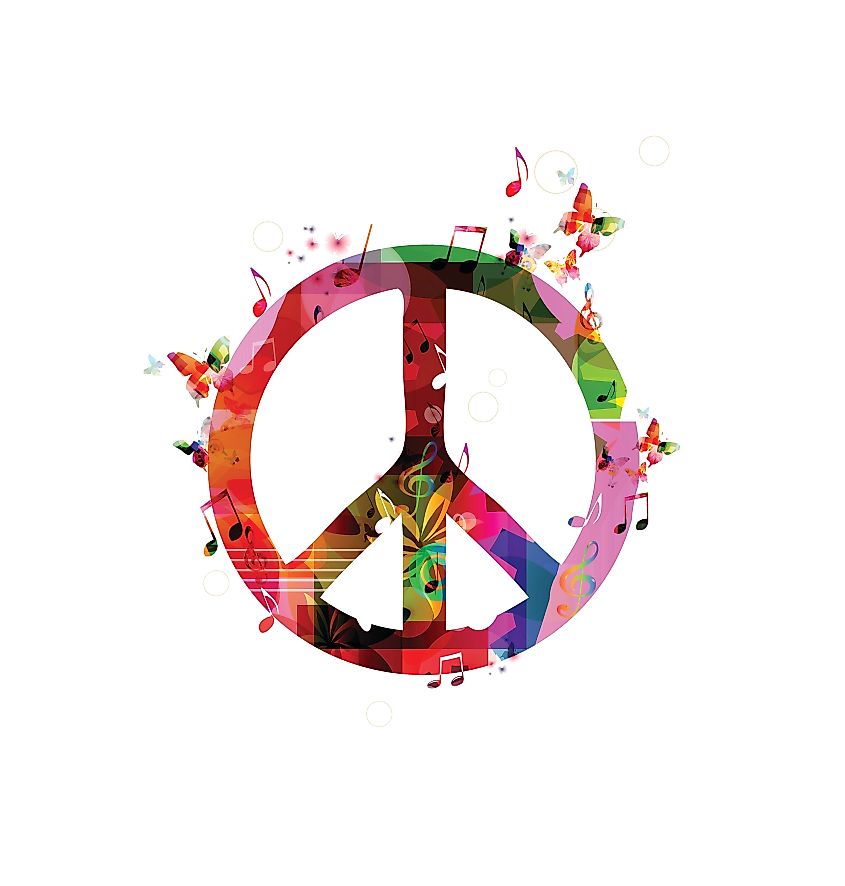Peace Symbols From Around The World

Peace is an important aspect of development and preservation of life. It is characterized by harmony, lack of violence, conflict, and freedom from fear of any kind. Peace is often understood as the absence of hostility, but it also suggests an attempt of reconciliation and existence of a healthy interpersonal and international relationships. Countries around the world and the international organizations like the United Nations and regional bodies have invested heavily in maintaining peace within countries and regions. They have made provisions for dealing with situations which threaten peace and may lead to violence. Some of the ways of maintaining peace include the employment of military army, investment on weapons, public awareness on the importance of peace, and the use of peace symbol to promote peace. Some peace symbols have been used in various cultures and context.
Dove and Olive Branch

The early Christians used the dove and the olive branch as a symbol of peace. The symbols were derived by the Christians from two sources; the story of Noah and the flood in the old Testament and the Greek thought. The story of Noah ends with a description of a dove bringing a freshly plucked olive leaf as a sign of life and peace after the flood. The symbol of dove and olive was confirmed by St Augustine of Hippo in his writings on the Christian Doctrine. The New Testament compares the Dove with the Holy Spirit with the dove representing peace of the soul and not civil peace among the early Christians. However, by the third century, the dove began to depict peace in the Old Testament. A dove and olive branch has also been used in the secular world as a representation of peace. The dove was a symbol of peace among the Communist party and was used in their demonstrations in the 20th century.
The Broken Rifle
The broken rifle symbol was used by the War Resister’s International and the other groups that were affiliated with it. However, the symbol was invented long before the formation of WRI in 1921. The broken rifle symbol was first used in 1909 during the masthead issue of the “Down With Weapon” which was a monthly publication of the International Antimilitarist Union in Netherlands. The German league for War Victims also used the symbol on their peace banner in 1917. The Belgian workers who marched through La Louviere in October 1921 carried a banner showing a soldier breaking his rifle.
White Poppy

The white poppy is a peace symbol advocating for an end to the war. It represents a belief that killing is not the only way to ending conflicts. The white poppy was introduced by the Women’s Cooperative Guild of the UK in 1933 during the period of widespread war in Europe. The women distributed the white poppy as an alternative to the red poppy. The Royal British Legion distributed the red poppies as a remembrance of the servicemen who had died in the World War I. In 1934; the Peace Pledge Union joined in the distribution of the white poppies as a pledge of peace and a commitment to war not happening again.
The Peace Sign

The peace symbol, popularly known as the anti-nuclear emblem, is one of the most widely recognized peace symbols. It was designed in 1958 by Gerald Holtom in support of the British Nuclear Disarmament movement. The sign is a combination of signal for the letters “N” and “D” The two letters are used to represent nuclear disarmament. The symbol was used as a badge of CND and wearing it is a symbol of support for the campaign for nuclear disarmament. The symbol was widely used in the US in 1958 during the nuclear test. In South Africa, the peace symbol was used by the opponents of apartheid.
Peace Crane

The crane is a traditional symbol of luck in Japan. It has been popularized as a symbol of peace by the story of a girl who died from the explosion of an atomic bomb over Hiroshima in 1945. The story accounts how Sadako Sasaki started folding paper cranes in her last days of illness. Initially, the crane symbolized peace that came from attaining a level of prosperity and friendship and not war and was only adopted for the war peace after the Hiroshima and Nagasaki incidences.
The V Sign
The V sign is a peace hand sign whereby the index and the middle fingers are raised but parted with the remaining fingers clenched. The sign can be used to convey different messages depending on the context in which they are used. The gesture can be used as an insult or as a peace sign depending on how it is displayed. If the back of the hand faces the observer, then it can be considered as an insult in Australia and South Africa. However, if the back of the hand faces the signer, then it is considered a peace sign or a sign of victory.
Shalom/Salaam
The word “Shalom” a Hebrew word which translates to Salaam in Arabic is an English word for “peace” has been used for decades as a symbol of peace in the Middle East and other parts of the world. The symbol represents peace in the conflict-stricken the Middle East and commonly used in an attempt to end the Arab-Israeli conflict. Shirts and wall plaques with the words Shalom or Salaam are common in the Middle East.
Pax Cultural Symbol (Ancient Asian Peace Symbol)
The Pax cultural symbol is a maroon Circle on white emblem with three solid dots inside the circle with the three dots standing for art, science, and religion. It was designed by Nichola Roerich to protect cultural artifacts. It has been used as a peace banner to protect historical, cultural, and significant scientific discoveries in times of peace and war. The peace banner is used on important cultural buildings to protect them from destruction during wars.











